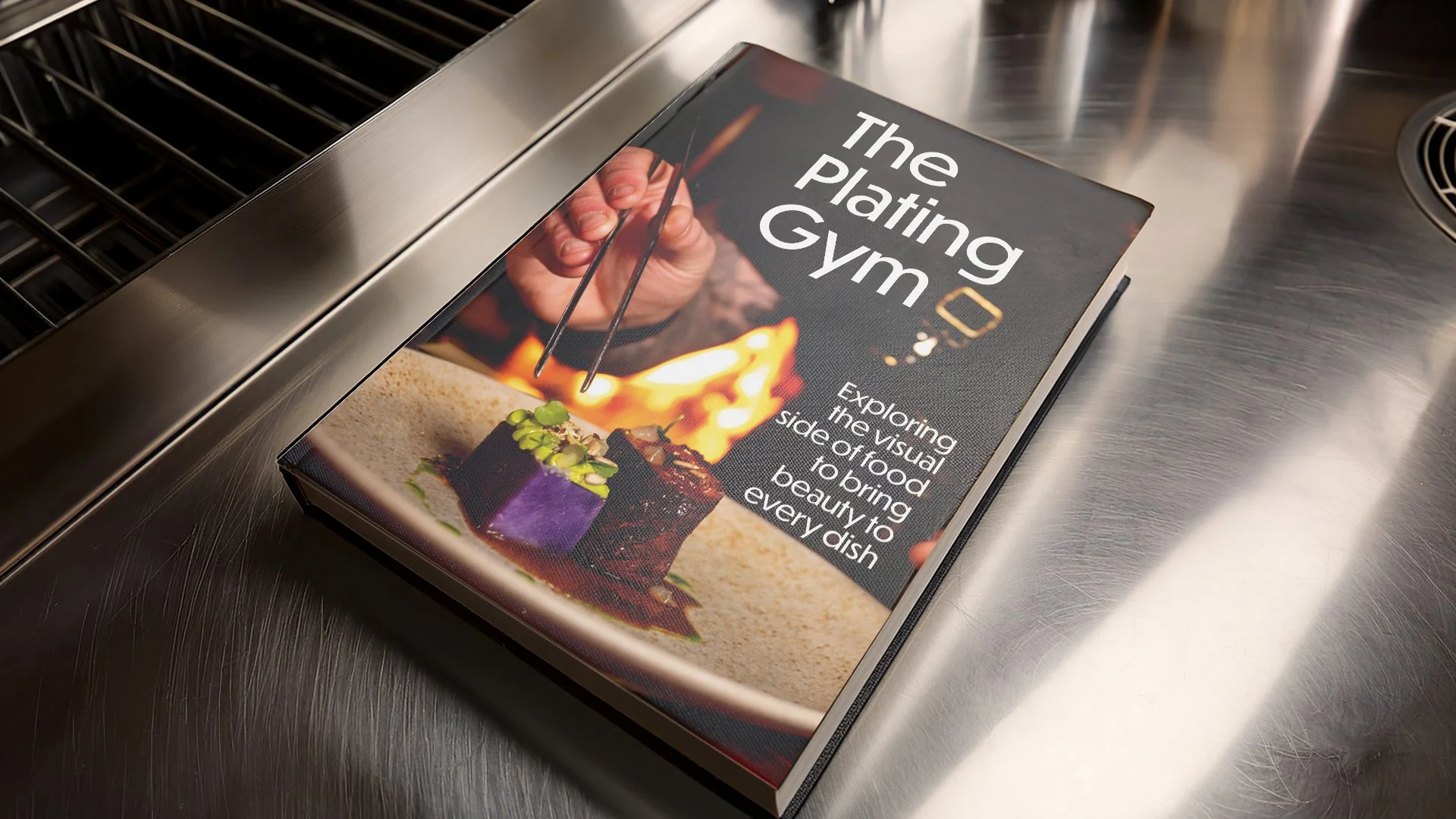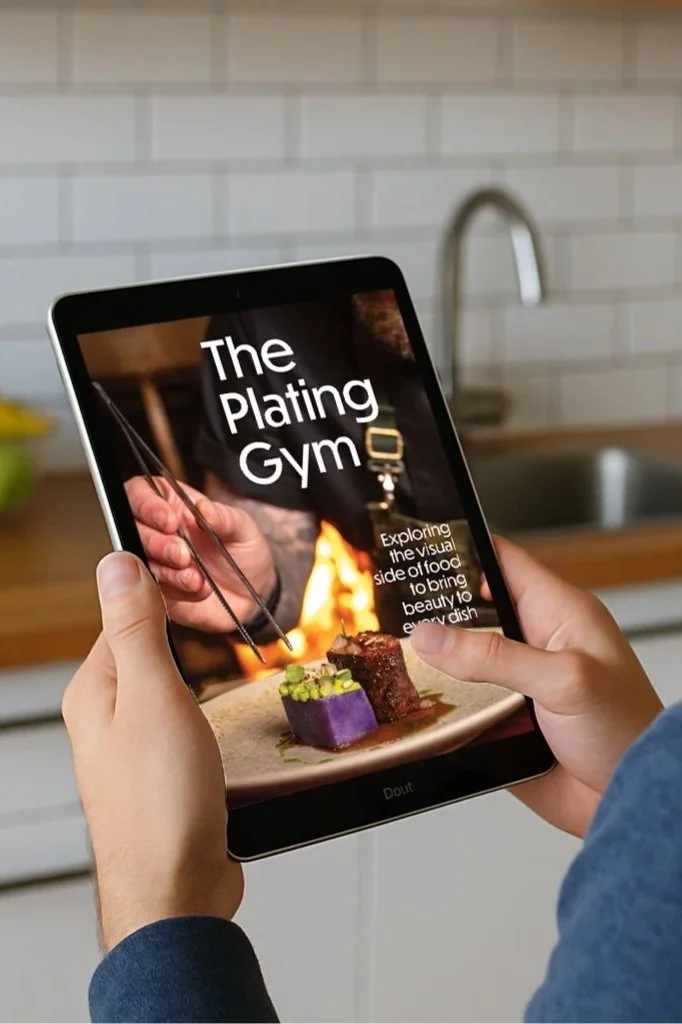Train Your Eye to Plate Like a Pro
If you’re serious about levelling up your plating, it starts with training your eye. The best chefs and Plateists don’t just randomly arrange food on a plate; they’ve trained themselves to recognise why a dish looks beautiful, what plating techniques are being used, and how to tell a story through presentation.
Today, we’re diving into how you can develop that same eye so you can plate like a pro—turning your dishes from tasty to unforgettable.
Why Training Your Eye Matters
Taste is king, but diners eat with their eyes first. When you learn to see plating as a design language, you unlock a powerful tool to elevate your dishes, guide your diner’s attention, and create anticipation before the first bite. This is what separates confident Plateists from cooks who just hope the plate looks good.
1. Learn to Analyse Beautiful Plates
Next time you see a beautifully plated dish on Instagram, in a restaurant, or in a cookbook, pause and ask:
What layout style is this? Is it isolated, linear, stacked, or condensed?
How is negative space being used to frame the dish?
Are the colours complementary or analogous to create harmony or tension?
What textures and heights are adding interest?
Then, go deeper: Why did the chef choose these techniques? A condensed layout might evoke abundance, while an isolated style can showcase the purity of an ingredient. Analysing the intent behind plating helps you think like a designer, not just a cook.
2. Think Like Your Diner
Great plating isn’t just about looking good; it’s about guiding your diner’s eye. Ask yourself:
What do you want your diner to notice first?
What element creates curiosity and pulls them in?
How will their eye move across the plate?
Elements like colour contrast, height, and texture naturally draw attention. By designing your plating with intention, you control the diner’s first impression, helping your dish tell a story before it’s even tasted.
3. Build a Visual Swipe File
In design, professionals use swipe files to collect inspiration. You can do the same for plating by:
Saving dishes you love on Instagram or Pinterest into collections.
Categorising by layouts (e.g. linear, condensed) or themes (e.g. colour, seasonality).
Regularly reviewing your collection to identify patterns and preferences.
Over time, this builds your visual vocabulary, helping you spot what makes a plate effective and inspiring new ideas for your own plating.
4. Analyse Your Own Past Plates
Have old photos of dishes you’ve plated? Revisit them with fresh eyes:
Was the layout intentional?
Did the colours and textures complement each other?
Is there clear visual hierarchy and negative space?
This reflection will reveal what’s working and where you can improve, providing a practical feedback loop to refine your style.
5. Practice and Iterate
Training your eye isn’t a one-off exercise. The more you:
Study plates in restaurants, books, and online.
Practise plating with intention.
Seek feedback from mentors, diners, or plating communities.
…the stronger your design instincts will become. You’ll start to notice the visual principles of plating everywhere—from the way ingredients are arranged to the patterns and colours that work together.
Bringing It All Together
Training your eye to plate like a pro is about consistency, curiosity, and intention. By learning to analyse plates deeply and understanding why certain choices work visually, you’ll move from simply placing food on a plate to designing dishes that tell a story before the first bite.
The best Plateists don’t rush this process. They consistently:
Observe: Study plates in restaurants, cookbooks, and social media, analysing layout, colour, balance, and storytelling.
Reflect: Look at your past plates to spot strengths and areas for improvement.
Collect Inspiration: Use Instagram and Pinterest as your personal “visual plating swipe file” to build a library of layouts, colours, and ideas.
Practice: Plate intentionally and take photos of your results to review later.
This habit of observation, analysis, and experimentation will sharpen your eye, build your confidence, and transform your plating from good to unforgettable.
What’s Next? Practical Steps You Can Take Today
If you’re serious about levelling up, here are your next steps:
1 Pick One Dish This Week to Re-Plate
Choose a dish you already make, and focus on plating it with intention. Try using one of the layout styles (stacked, linear, isolated, condensed) and analyse the results.
2 Start Your Swipe File
Create a saved collection on Instagram or Pinterest labelled “Plating Inspiration.” Each week, save 5–10 plates that catch your eye and note what you love about them.
3 Use a Journal
After plating, jot down what worked, what didn’t, and what you’d try next time. This reflection builds your plating intuition faster than simply moving on to the next dish.
4 Watch and Learn
If you want to see these concepts in action, check out my Dining Fables video on Training Your Eye to Plate Like a Pro (linked above), where I break down real plates and explain why they work visually.
5 Grab Your Free Resource
Download my free Plate Like a Pro Guide (if you haven’t already). It’s been downloaded by thousands of chefs and home cooks and will give you a structured starting point to practice your plating skills.
Why This Matters
Plating is more than making food look pretty. It’s about:
✨ Enhancing your diner’s first impression
✨ Telling a story with your dish
✨ Showcasing the care you put into your cooking
✨ Building your confidence as a creative Plateist
When you train your eye, you move beyond copying trends and develop your own style. You’ll start seeing plating as a natural extension of your cooking—turning every meal into an experience that delights visually and emotionally.
Let’s Keep Growing Together
If you found this helpful, consider:
✅ Subscribing to Dining Fables on YouTube for free plating tutorials and breakdowns.
✅ Joining our newsletter for exclusive plating tips, behind-the-scenes lessons, and a supportive community of chefs and passionate home cooks.
✅ Leaving a comment below: What’s your biggest challenge when it comes to plating? I read every comment, and it helps shape future content for you.
By consistently training your eye and practising these principles, you will develop a plating style that feels natural, confident, and unmistakably yours.
Keep plating. Keep observing. Keep growing. And remember:
Plating isn’t just a finishing touch. It’s the first impression your food makes—make it count.


